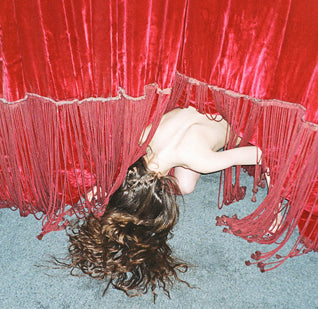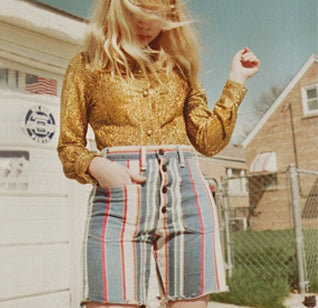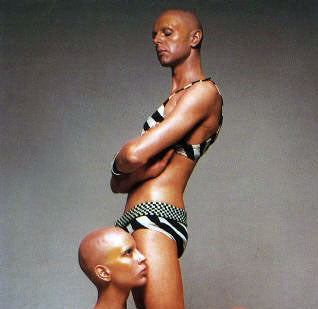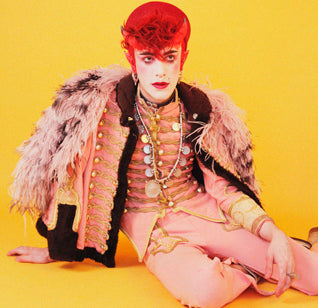FASHION BEYOND SKIN
Pleather is not a dirty word
by Martha Barnett
Pleather has long been synonymous with the cheap and nasty, associated with the cut-price end of the high street and designer knock-offs. From the Naughahyde chairs of the 70s that squeaked when you moved, to handbags that deteriorated before the end of the season: until now, fashion has never had reason to love pleather.

Sam Ypma by Wilkosz for 'Fashion Gone Rouge', 2012
Yet striding down the catwalks of 2014 is an exciting new breed of luxurious faux leather. Unlike real cow hide its properties can be adapted to suit the design purpose – thick, thin, supple, structured, soft, breathable or flexible, the new pleather is what you want it to be. No longer merely a cheap substitute for real leather, it has broken through as a tech fabric in its own right.
Embracing this new fabric and making use of its lightness, weatherproofing and durability, Michael Kors has crafted bomber jackets and leggings, Michael Bastian has turned to it for outerwear and a firm fashion nod was given to it when, Carine Roitfeld favourite, Joseph Altuzarra used it in coats and bodycon dresses. Even fashion giants Armani have chosen it for lines of wallets and bags.

Faux-croc pleather boots from Stella McCartney, 2012
The development of the fabric also has an ethical force championing it. PETA’s ‘I’d rather go naked’ ads which launched in 1991 and their 2005 ‘Ink, not mink’ campaign have had a serious impact on how fashion and consumers view fur – with sales slumping to historic lows. Until recently the use of leather had remained relatively unquestioned, but there are now a few designers who openly put ethical issues at the forefront of their brands and refuse to use real animal hide.
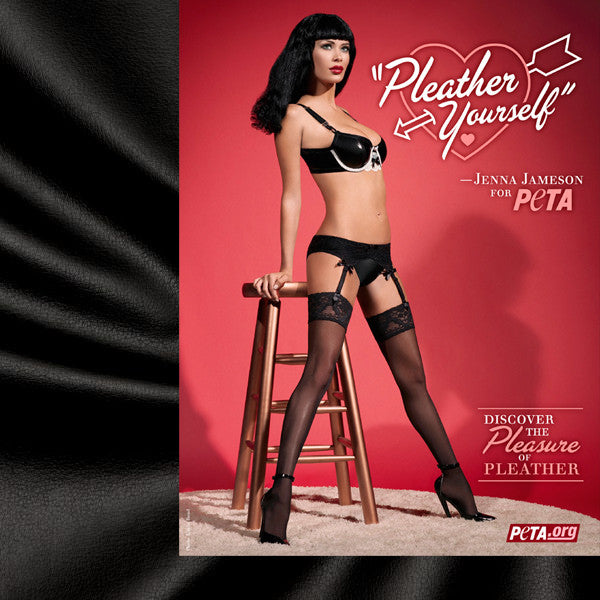
PETA, 'Go Pleather Yourself', 2008
One of the most prominent is fully-fledged vegan Stella McCartney who has based her brand entirely on cruelty-free materials.This season her Falabella quilted tote made with recycled plastic bottles is in serious demand and her Spring ’15 collection is bursting with punkily hued polyurethane blend shoppers and clutches. Emerging boutiques like Deux Lux and Cri de Coeur are also making style forward, ethically sourced faux leather products and last year vegan fashionistas rejoiced when fellow herbivore Anne Hathaway stalked the red carpet at the Les Mis premier in a pair of shiny vegan leather bondage boots – custom made for her by Tom Ford. Even current street style favourite Dr Martens have released vegan versions of their iconic boots.
Fashion, however, doesn’t seem to be comfortable using the term ‘vegan leather’. The hint of moral superiority the name carries is rather off-putting and even Stella McCartney side-steps using it for her products. Other monikers like ‘faux leather’ and ‘leatherette’ suggest there is something fake about the product, so we’re back to calling it pleather.

Street style pleather, 2014
With the new developments in the fabric and fashion superstars behind it, pleather is being released from the stigma of its past. We can stand proud in our pleather boots, safe in the knowledge we are more fashion forward, ethical and even comfortable than those wearing common leather.
Whatever the name and whatever the driving forces behind fashion’s new appropriation of pleather it is opening up new, exciting design possibilities as well as making high-end fashion accessible to those who choose not to wear animal products. Meaning we no longer have to have style defined by ethics. A vegan no longer has to dress like a vegan and pleather is no longer a dirty word in fashion.












